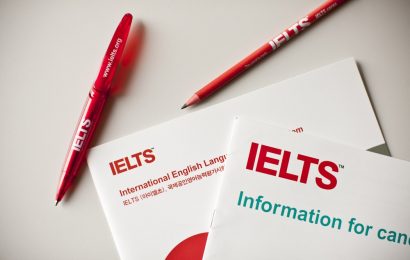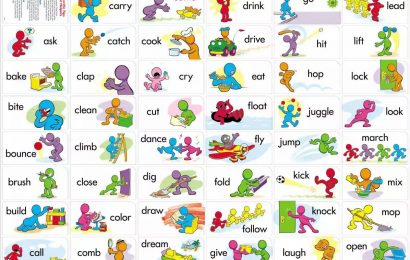Writing Task 2 of the IELTS exam requires you to write an essay in response to a question or prompt. Read the prompt carefully and make sure you understand what is being asked of you. Identify the topic, the issues to be discussed, and any specific instructions. Before you start writing, take a few minutes to plan your essay. Jot down key ideas, arguments, and examples you want to include. Organize your thoughts into an essay structure.
Some people argue that public transportation should be free of charge, while others believe that it should be paid for by users. Discuss both views and give your own opinion.
Response 1
The question of whether public transportation should be provided free of charge or financed by users has sparked extensive debate. Advocates for both approaches present compelling arguments, and my view leans toward a balanced, user-contributory model.
Proponents of free public transportation argue that it offers numerous advantages. Firstly, it promotes a more sustainable environment by encouraging a shift from private vehicles to public transport, which can help reduce traffic congestion and lower emissions. Secondly, it fosters social equity as it ensures that everyone, regardless of their income, has access to essential transportation services. Furthermore, a fare-free system can simplify travel logistics and reduce waiting times, making public transport more attractive.
Conversely, those who support user-paid public transportation emphasize the benefits of a financially sustainable model. Charging users for transportation generates revenue that can be reinvested in system improvements, such as expanding the network, enhancing service quality, and maintaining safety standards. Additionally, it fosters a sense of responsibility among commuters, reducing misuse and wastage of resources. Moreover, revenue from fares can help support disadvantaged populations through subsidies or discounts.
In my opinion, a hybrid approach that combines elements of both models is the most pragmatic solution. Offering essential routes at no cost while maintaining fare structures for others would strike a balance between social inclusivity and financial feasibility. Subsidies and discounts should be provided to low-income individuals to ensure affordability and accessibility. This approach not only encourages public transportation use but also ensures sustainable and efficient services.
In conclusion, the debate over free versus user-paid public transportation is complex and multifaceted. While free transport may seem appealing, a pragmatic approach that incorporates user contributions alongside public subsidies is more likely to ensure the long-term viability and fairness of public transportation systems.
Response 2
The debate over whether public transportation should be offered for free or financed by users is a complex and relevant issue in today’s urban planning and transportation discourse. Advocates of both positions present compelling arguments, and I believe there are merits to each perspective.
Supporters of free public transportation argue that it carries several benefits. Firstly, it can reduce the number of private vehicles on the road, mitigating traffic congestion and lowering emissions, which is vital for environmental sustainability. Moreover, by making public transportation accessible to all without financial barriers, it fosters social inclusion, ensuring that even those with limited means can access essential services. Additionally, the absence of ticket fees simplifies travel logistics and can enhance the overall attractiveness of public transport, potentially increasing ridership.
Conversely, proponents of user-paid public transportation highlight the advantages of a self-sustaining model. Charging passengers for transportation generates revenue that can be reinvested in infrastructure, maintenance, and service improvements. This model encourages responsible usage, as users are less likely to waste resources when they have a financial stake in the system. It also ensures that the burden of financing the transportation network is distributed fairly among those who utilize it.
In my view, a balanced approach is the most pragmatic solution. Maintaining a combination of free and paid services seems to strike the right balance between social equity and financial sustainability. Essential routes within a city should be accessible free of charge to promote inclusivity, but fare structures can be maintained for routes with higher operational costs. Additionally, subsidies and discounts should be available to support low-income individuals, ensuring that transportation remains affordable for all.
In conclusion, the issue of whether public transportation should be free or paid for by users is a complex matter with valid arguments on both sides. Striking a balance that combines the benefits of both models offers a pragmatic solution that encourages the use of public transport while ensuring the long-term financial viability of transportation systems.
Response 3
The debate over whether public transportation should be provided free of charge or financed by users is a topic of ongoing discussion. Advocates for each viewpoint present compelling arguments, and I hold the opinion that there are valid merits to both perspectives.
Proponents of free public transportation assert that it brings several benefits. Firstly, it can serve as an incentive for individuals to opt for public transport, ultimately reducing the number of private vehicles on the road. This, in turn, can alleviate traffic congestion and lower greenhouse gas emissions, contributing to environmental sustainability. Secondly, making public transportation free ensures that it is accessible to everyone, irrespective of their economic status, fostering social inclusivity. It can also simplify the travel experience by removing the need for ticket purchase and fare collection.
Conversely, those in favor of user-paid public transportation argue for the advantages of a self-sustaining model. Charging passengers for transportation generates revenue, which can be reinvested in improving the quality and reliability of services. Furthermore, it encourages responsible usage, as passengers are less likely to misuse resources when they have a financial stake in the system. Additionally, it distributes the cost of public transportation fairly, with those who use the service contributing to its upkeep.
In my view, striking a balance between these perspectives is a practical solution. A hybrid approach that combines essential free routes with user-paid services could offer the best of both worlds. This approach promotes inclusivity while retaining a degree of financial sustainability. Subsidies or discounts for low-income individuals can ensure accessibility and fairness.
In conclusion, the question of whether public transportation should be free or financed by users is multifaceted. Combining aspects of both models in a hybrid approach appears to be the most pragmatic solution, as it encourages public transport use and upholds the long-term financial viability of transportation systems.
- APA:
Dammio. (2023). [IELTS Writing Task 2] – Test 1: Public transportation. https://www.dammio.com/2023/10/25/ielts-writing-task-2-test-1-public-transportation. - BibTeX:
@misc{dammio,
author = {Dammio},
title = {[IELTS Writing Task 2] – Test 1: Public transportation},
year = {2023},
url = {https://www.dammio.com/2023/10/25/ielts-writing-task-2-test-1-public-transportation},
urldate = {2025-12-19}
}

![[TOEIC] Incomplete sentences – Test 6 [TOEIC] Incomplete sentences – Test 6](https://www.dammio.com/wp-content/uploads/2017/05/toeic1-410x260.jpg)
![[TOEFL iBT] Danh sách từ vựng – Vần E [TOEFL iBT] Danh sách từ vựng – Vần E](https://www.dammio.com/wp-content/uploads/2017/05/englishwords-410x260.png)

